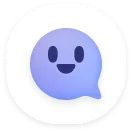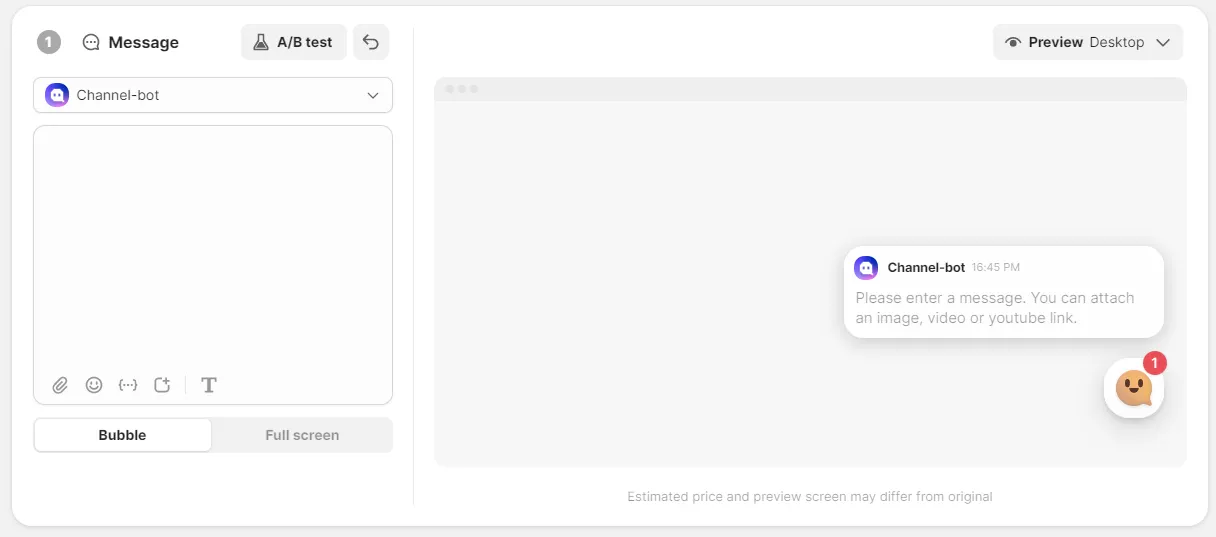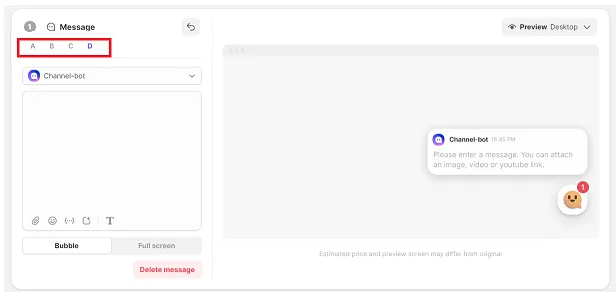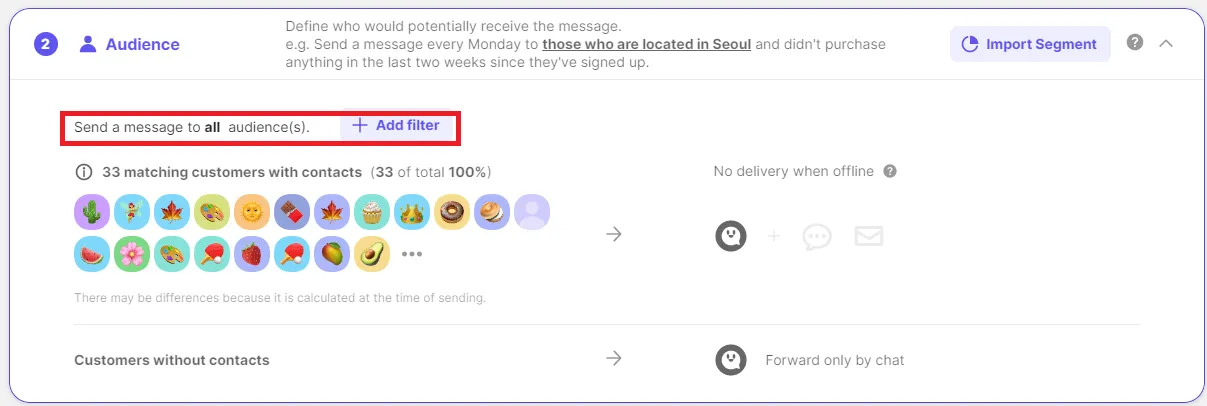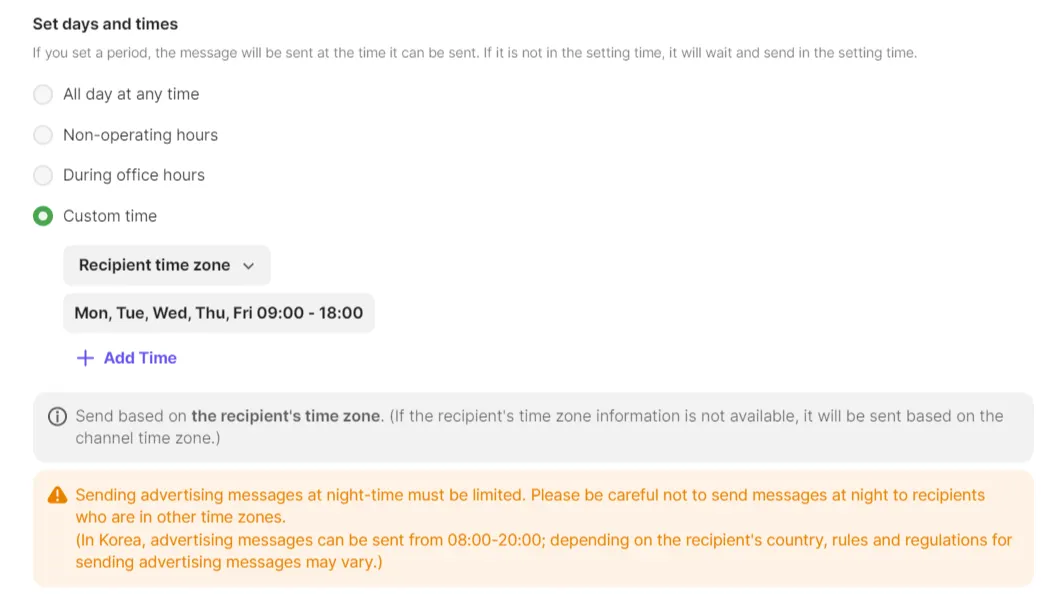The marketing campaign helps you to send the message to your customers when certain actions are made by them after visiting the website. You can send the message to customers with a discount coupon after they sign up or offer a new arrivals promotion for those who added new arrival products to their cart.
What is the campaign message?
It is a feature that automatically sends marketing messages by identifying specific actions (events) of target customers on the website where Channel.io is installed.
•
Campaign Operation process
Please remember the 3 steps below to understand the operation process.
Customer information is checked at each step. At each stage, if the target audience is not met, the message is not sent.
Trigger
•
Set the conditions (events) for the campaign to start. If the condition is satisfied, it moves on to the ‘Process’ stage.
E.g.) A start event has occurred when;
1.
The customer enters the website and views a page, or
2.
The customer clicks the shopping cart button.
•
When a start event occurs, the system checks whether the target audience information is matched.
Process
•
Once the trigger event is met, we call it a process that counts the delay time(waiting time) before sending campaign messages to the target audience.
•
If set to [Immediate], when the start event is satisfied, it goes to the sending stage immediately.
•
◦
We can add an additional event filter during delay time to send the campaign message. we go to the next step only when specific events occur or do not occur.
◦
E.g.) Send messages about a coupon discount if the customer does not purchase within 7 days after signing up
•
In the process step, the system checks whether the target audience information is matched.
If a campaign ends during the delay time(waiting time) period, the campaign message may not be sent at the process stage.
Send
•
Set when and how to send a message if the preceding conditions are satisfied. The message will send to the target audience.
◦
E.g.) Send a message every Monday at 9am if the customer hasn’t purchased anything for 2 weeks after signing up.
•
In this step, the system checks whether the target audience information is matched before sending out the campaign message. If the target audience information is not matched, the message will not send.
If a customer reached 1 session when the start event occurred and reached to 2 sessions just before sending the message out, the campaign message is not going to send to the A customer.
How to send the campaign messages?
It is a process of sending a one-time message automatically to your customers when certain actions are made by them after visiting the website. You may refer to how to set up a one-time message.
1.
Decide how you going to deliver the campaign message
•
For detailed information about delivering marketing messages, click here
2.
Compose a message
A space to compose a message to be sent as a campaign message. Send messages using images, videos, etc. as well as text.
•
A/B Test
◦
You can check which message works best under the same conditions through A/B testing.
◦
You can set up to 4 in total, and they are sent randomly.
3.
Find your target audience
Select whom you want to send one-time messages to.
•
The customer’s online/offline status will be determined at the time of sending messages, and the message delivery method will be changed as below depending on the status;
◦
◦
Customer contact information on file but offline: Message delivers via Channel.io chat + Text + Email
◦
4.
Trigger event
Examples of trigger events set up
•
When the customer completed the sign-up process:
If your website’s sign up page URL contains signup(e.g. abc.com/signup/123), you can set the trigger event as;
[PageView] + [URL contains sign up]
•
When the ad link contains a UTM variable:
If the website address contains UTM value(e.g. www.siteaddress.com/utm_source=google&utm_&utm_term=&gclid=CjwKCA), you can include a specific UTM value.
[PageView] + [URL contains google]
5.
Delay time
If you set the delay time, the message will not send immediately to the target audience. After the start event occurred, the message will send after the delay time has passed.
6.
Additional event
If you use the additional event filter, the system tracks whether the customer who completed the start event did or did not complete an additional event action during the delay time.
By using the additional event filter, you can send a message if there is no purchase within 1 day after placing an order, or send a message if a purchase is made within 3 days of viewing page A.
[Tip]
Even if an additional event occurs, the message will send after the delay time.
For example, let's say you want to send a message to a customer who completes a purchase within 3 days of viewing page A. Even if the purchase completion event occurs on the first day, the message will send after 3 days which is set as a delay time.
7.
Set up operation
Set when and how to send a message to the target audience who met the above conditions.
•
Repetition
◦
Campaign messages will send once only if the repetition setting is off.
◦
When the repetition is on, your customers can get the same message again.
◦
The minimum cool-down period is 24 hours.
•
Scheduling start and end date
◦
The campaign will be active during the time you set.
◦
The campaign will be active immediately if you don't set a start time, and it will be continuously active until you manually turn it off.
•
Set time & date
◦
If you set a specific time, the message will be sent at the time you set.
◦
If it is outside the set time, the message will be sent after the available time for sending.
E.g) If you set it to send during operating hours and the customer completes the start event during non-operating hours, the message is not going to send immediately. The message will send during the next operating hours.
◦
If you want to set a different time zone to send the campaign message, use a custom time.
▪
‘Channel time zone’ - Th message will be sent out based on the channel time zone.
▪
'Recipient time zone' - The message will be sent out based on the recipient’s time zone. If there is no recipient’s time zone information, the message will be sent out based on the channel time zone. If the recipient's time has passed the scheduled delivery time, the message won’t be delivered.
For advertising messages, we recommend you send them during business hours.
8.
Goal Setting
Set goals to measure the conversion rate of the message you send. When a customer who receives the message visits the website and completes the event you set, it is measured as a goal achieved.
